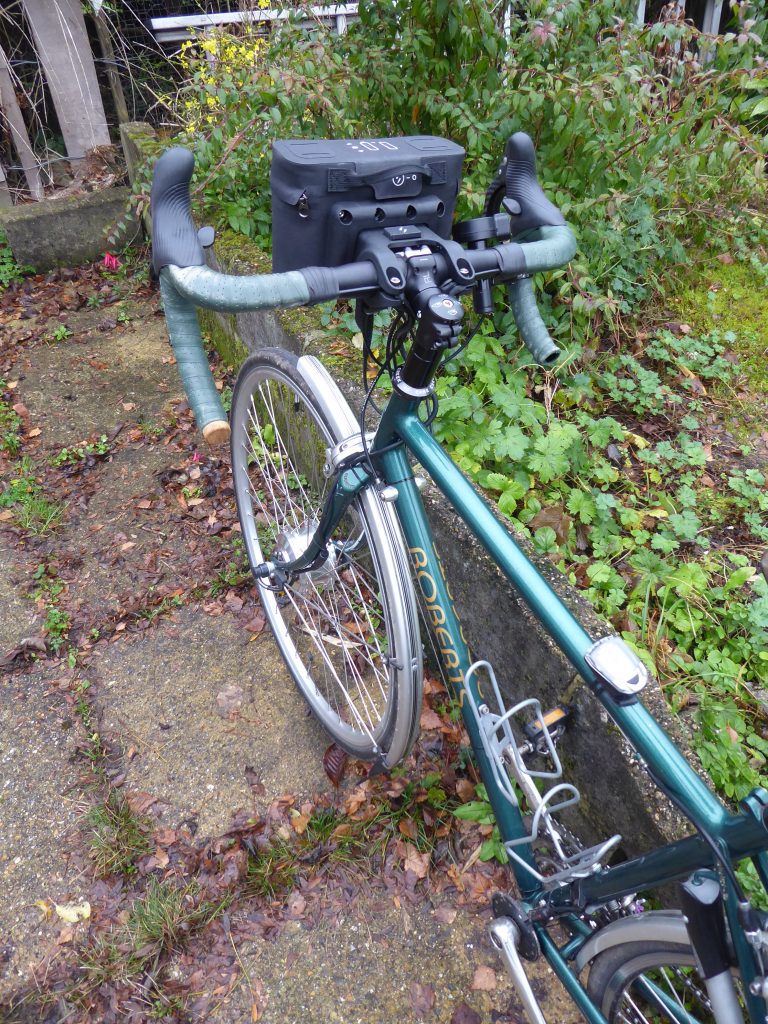Karon loves her Roberts bike but was rarely riding it, as her health issues made even the gentlest of uphill gradients very difficult for her. We had talked about adding an e-assist kit to the bike for a while, but she didn’t want whatever we chose to change the bike too much, or make it unwieldy. Big batteries and motors are heavy. In the end, I settled on a Swytch Bike kit. It’s a front wheel hub-drive kit with a smallish battery that fits to the handlebars rather that the rear rack or downtube.
The kit motor comes built into the wheel size you specify. You also receive the battery and cover (this version is the ‘Pro’ with more range), the battery handlebar mount and cover and pedal sensor along with plenty of zip ties and two instruction leaflets. Brake sensors and a throttle are shown on the Swytch website and there are connectors for both on the kit, but there doesn’t seem to be a way of buying them online without contacting Swytch.
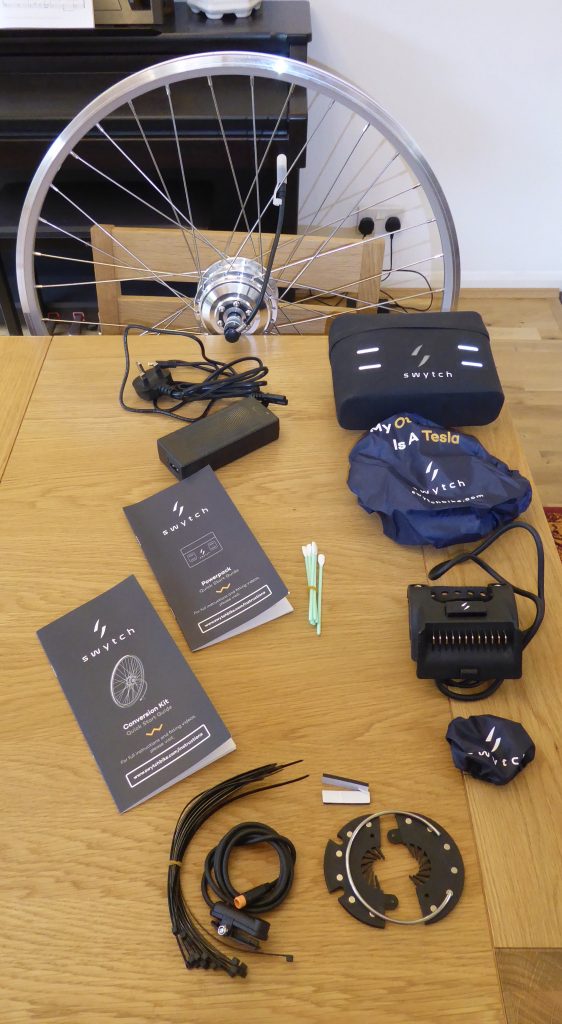
Fitting the kit was straightforward and easy, though I did have to file out the paint from the dropouts on the bike so the axle would fit.

The pedal sensor assembly is very easy to fit as the magnet plate comes in two halves that fit together over the crank and are held firm by a metal ring, so there’s no need to remove the crank arm. The actual sensor is positioned close to the plate in line with the magnets with zip-ties and a sticky pad. I ran the wire up the underside of the down-tube, so it’s not too obtrusive.
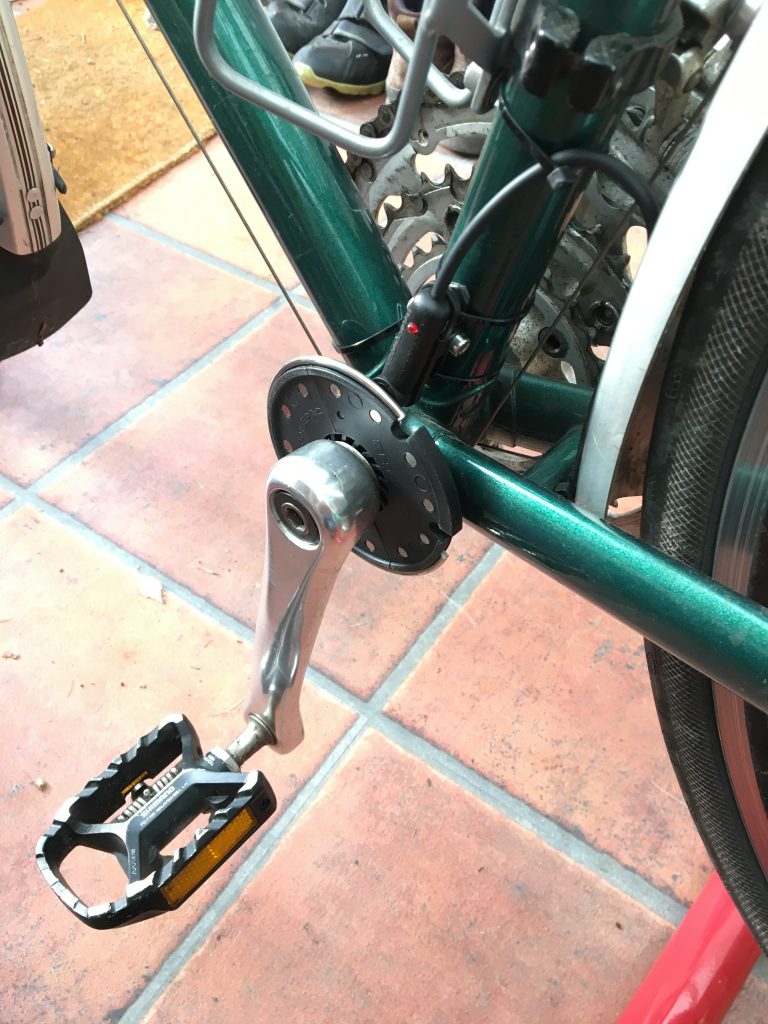
The battery mount clamps to the bars close to the stem and has a strap to prevent the weight of the battery rotating the mount around the bars.
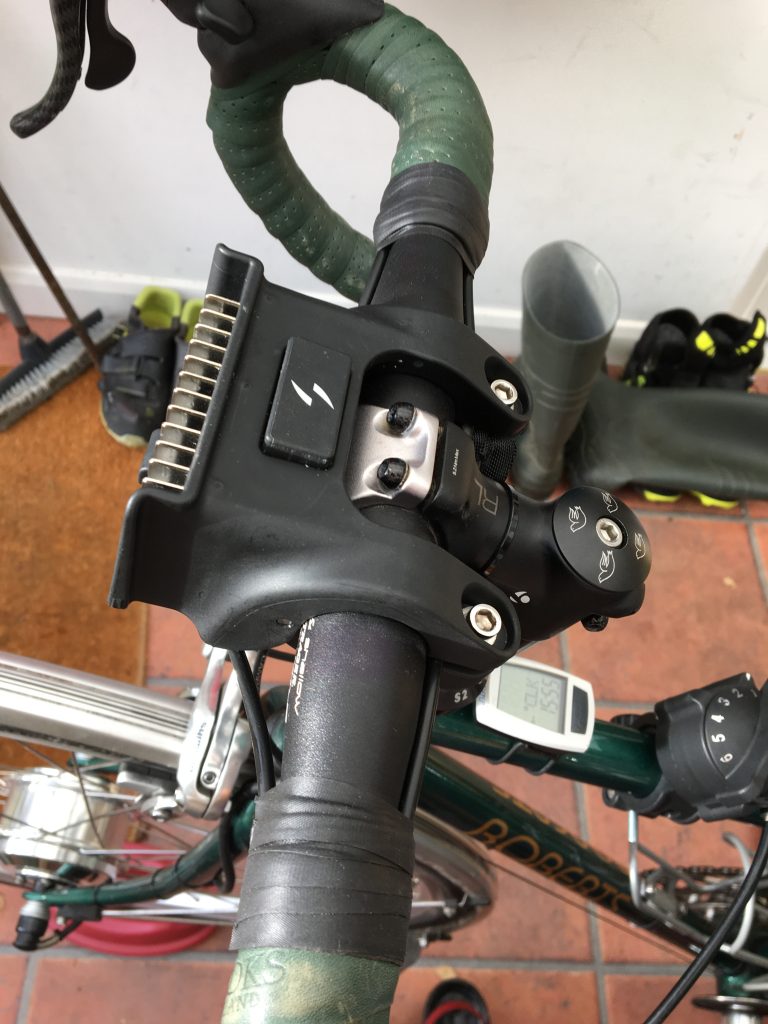
Once the dropouts had been filed, just a little, the wheel fitted well. The tire that came off the old wheel popped off the new rim but another 28mm 700c tire did fit and inflate without popping off the rim.
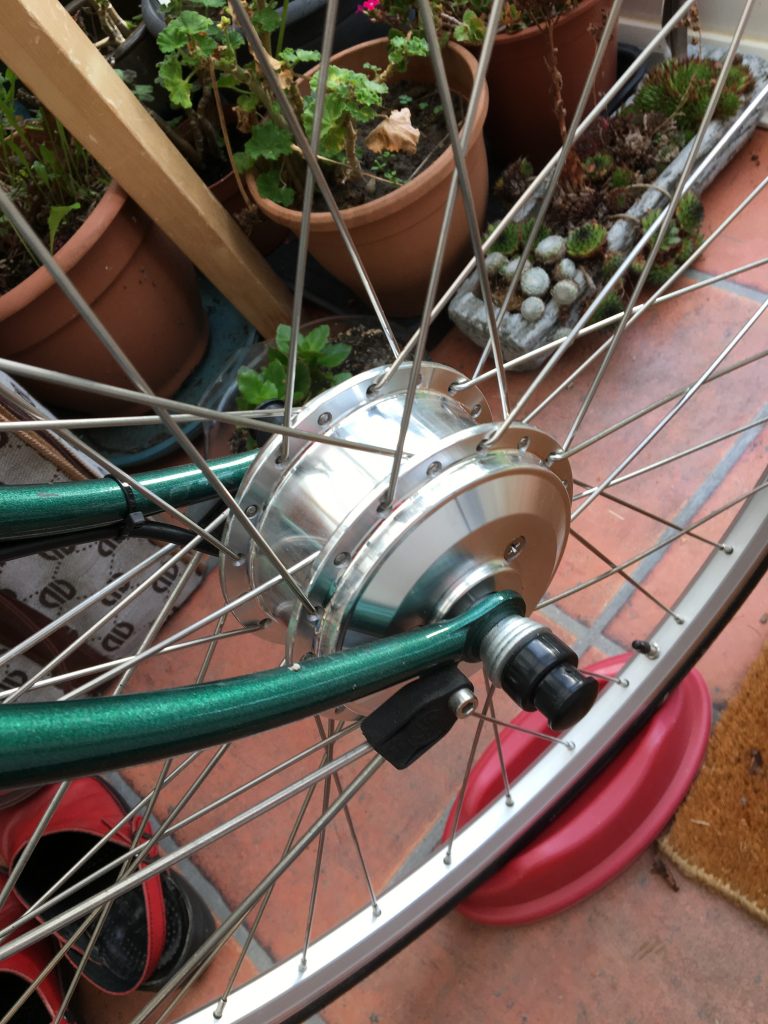
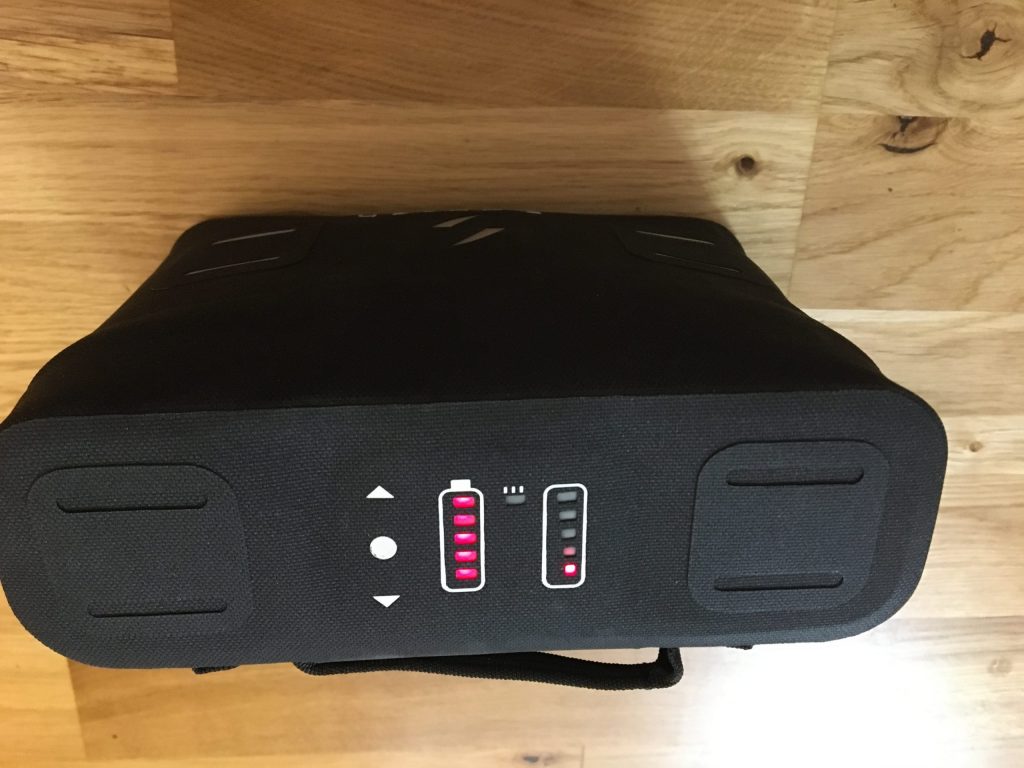
The ECO kit has a battery capacity of 5.2Ah (187Wh) and an expected range of 35km on medium power. The PRO kit has a battery capacity of 7Ah (252Wh) and an expected range of 50km on medium power.
There are five power levels and all will keep providing power until the maximum 25kmh/15.5mph legal (UK) limit is reached. This is different from other e-assist motors I have used, where each power level has a pre-determined speed cut-off, which increases with each power level increase, up to the maximum legal speed on the highest power level. Varying the speed cut-off to match the power level is more flexible in my opinion, and allows for easier power management and therefore more flexibility in optimising the range for each charge.
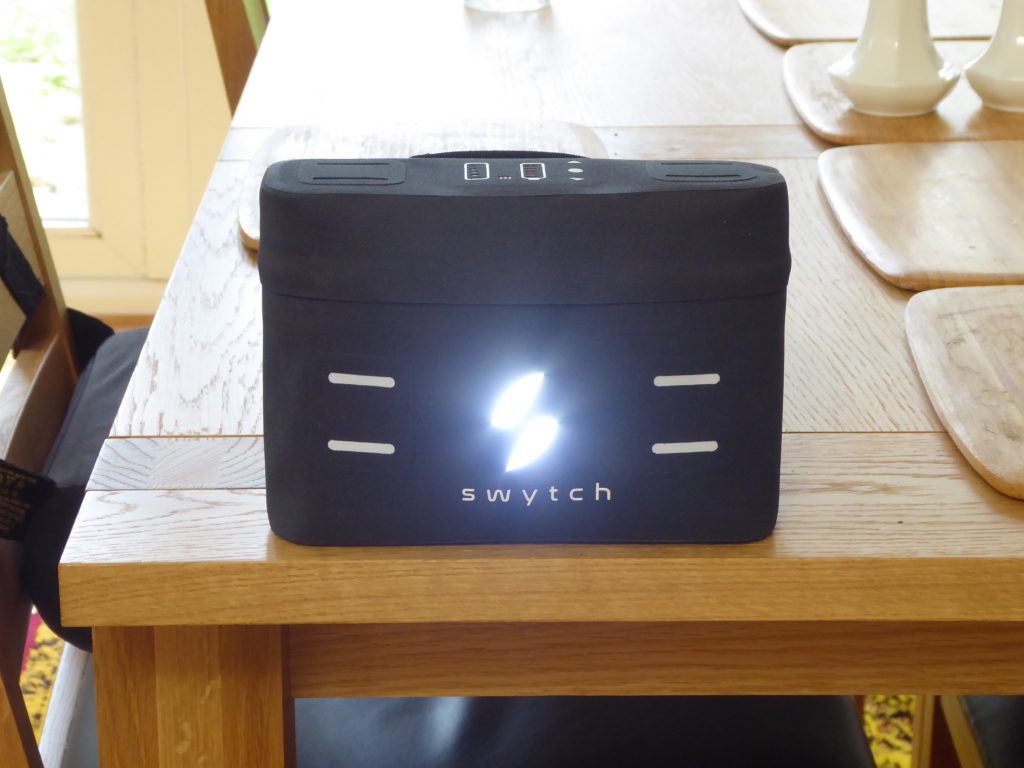
After trying the bike, Karon decided she wanted a throttle as hill starts were difficult in that you need to turn the pedals before the motor kicks in and on a steep hill, she would not necessarily be strong enough to get the bike started. It also makes pulling away at junctions safer, as you can get going and accelerate quickly.
The Swytch throttle is expensive and doesn’t come with the UK kit (as throttles are actually illegal in the UK). However, I bought one online which is essentially the same but a lot cheaper. I couldn’t use the connectors as they didn’t match so I trimmed the wires and soldered them together. There are only three wires and the colours used are similar in the kit and the third party throttle. I used a Minouri bar accessory bracket to position the thumb throttle in the best place.
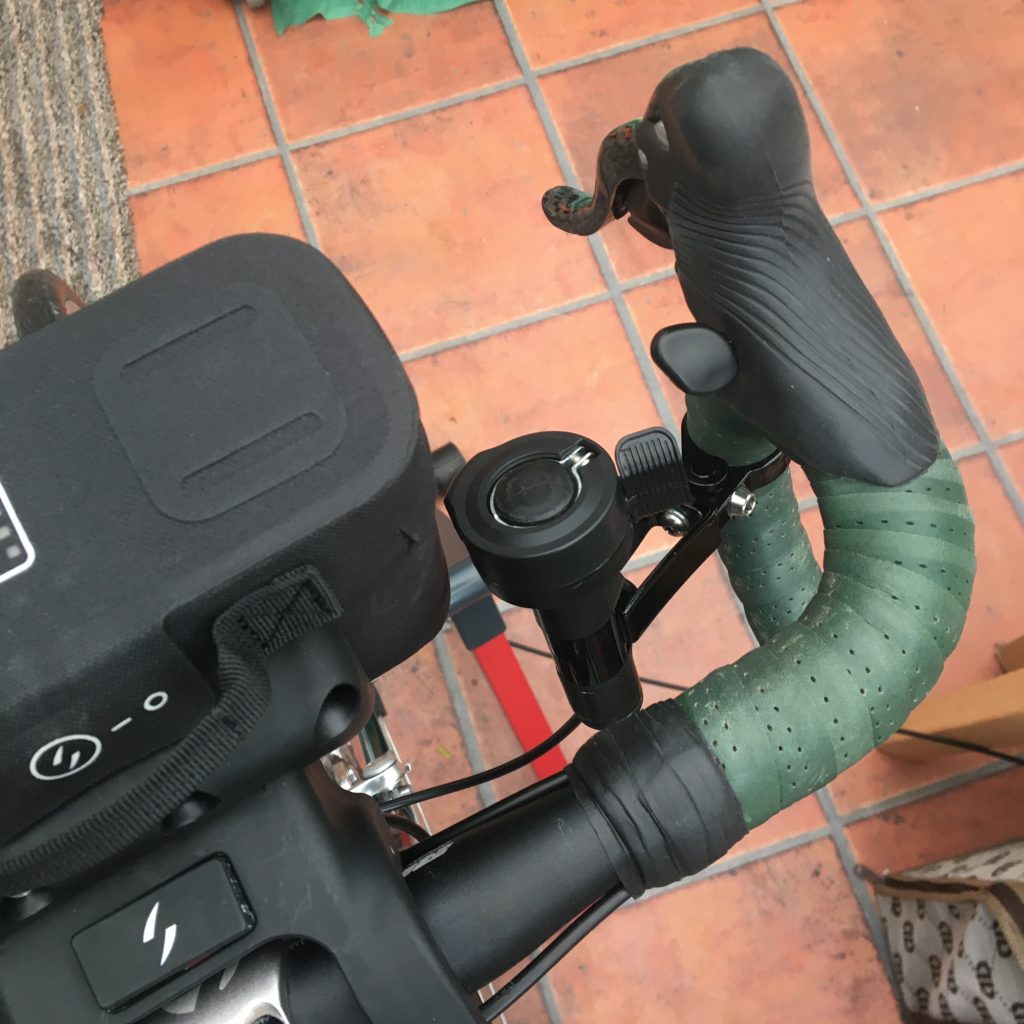
We had obtained some inline brake sensors to cut power when braking, but in use Karon found she didn’t need them, so I put them on eBay. We also found that the motor/controller interfered with her wireless trip meter, so I moved the sensor for that to the rear wheel and positioned the display further back on the cross-bar.
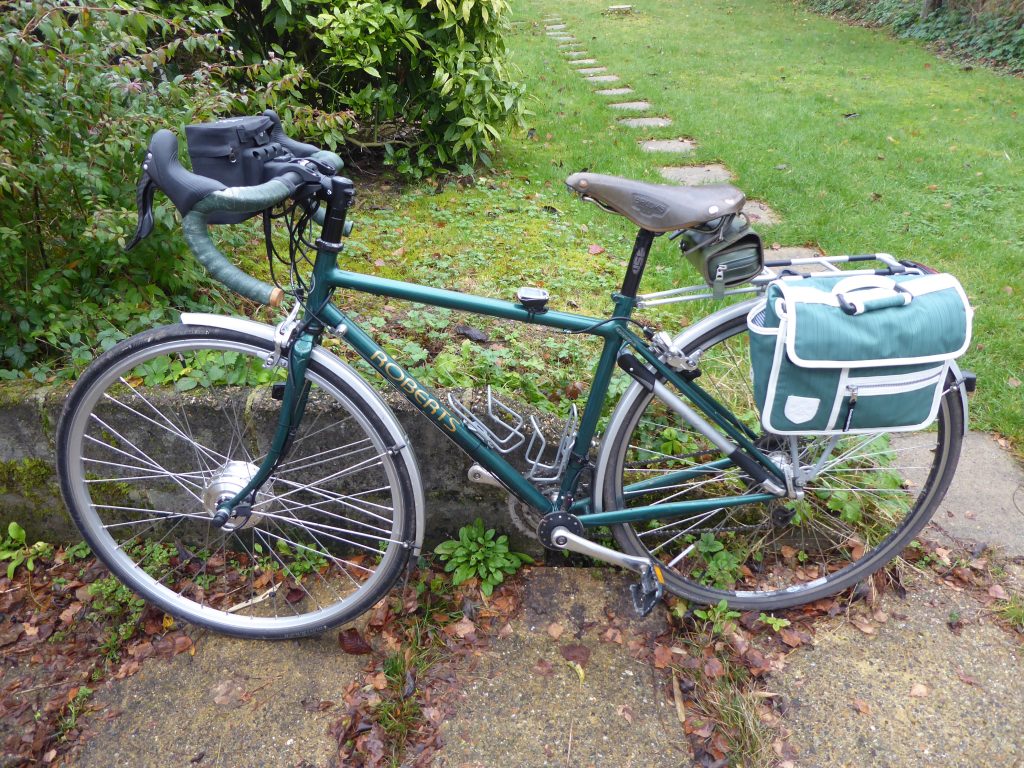
For the power, the battery is quite large but I do like the way the controller is integrated into it. The kit is also very neat and it would be relatively easy to remove the battery and replace the motor wheel with the bike’s original, as there is a connector on the fork, near the hub. This would leave just the wiring and handlebar mount in place and quickly revert the bike back to almost its original state.
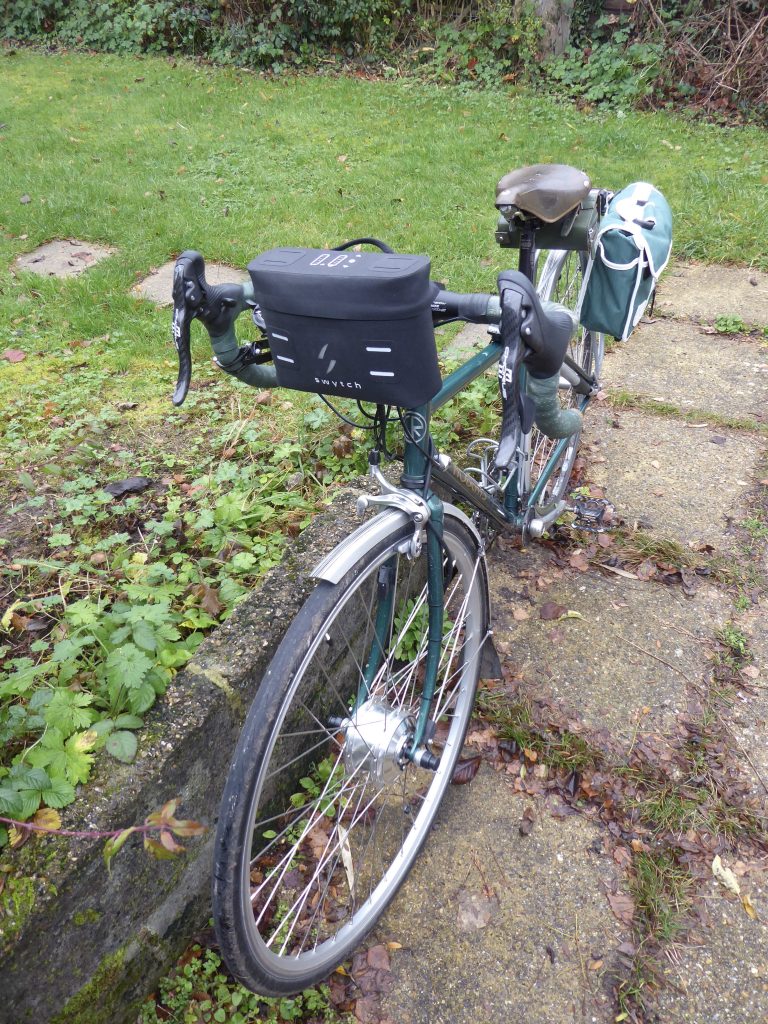
Compared to the 17.5Ah (630Wh) of the Hailong battery on our tandem, the 7Ah battery on the Swytch kit is pretty meagre. Our tandem covered 60 miles on full power before the Battery Management system started reducing power to the motor to protect the battery from draining completely. Using assist only on climbs when needed on the tandem gives us a range of at least 80 miles between charges, often more in ‘easy’ terrain.
With the Swytch kit, Karon estimates that each of the five battery ‘bars’ are good for about 4 miles, so the kit would deliver roughly 20 miles constant use. Obviously using it only on climbs will extend the range to the 30 mile figure quoted by Swytch.
